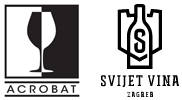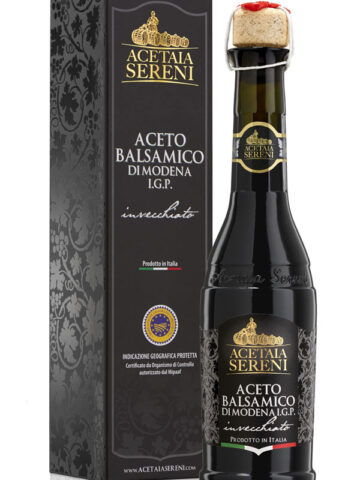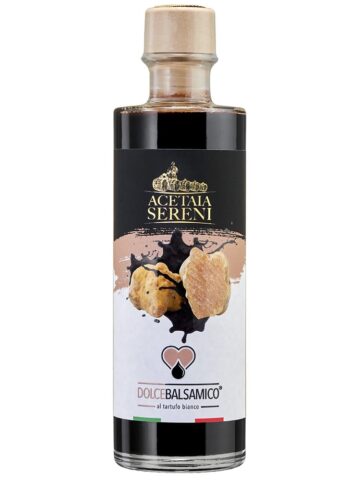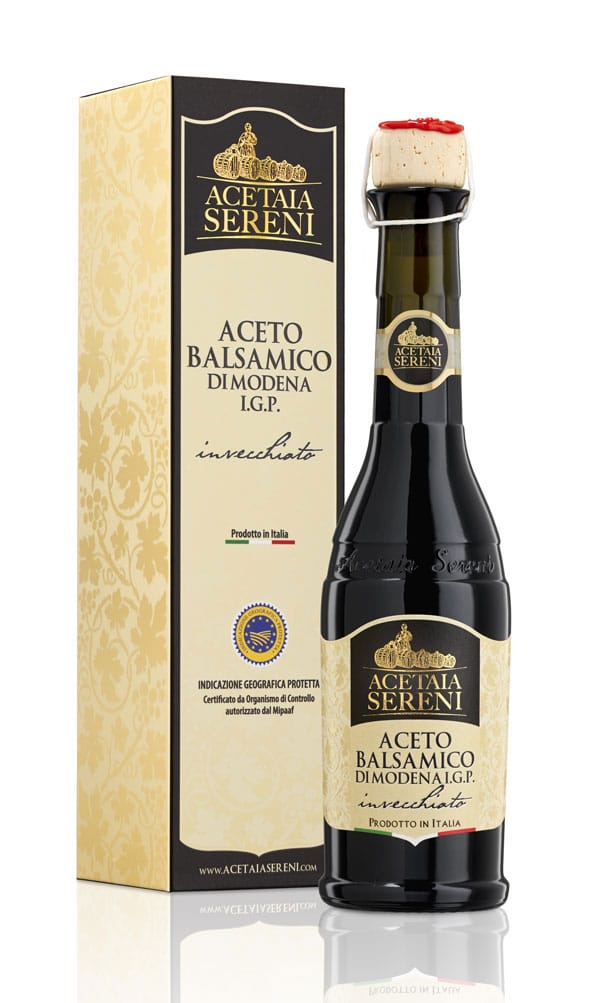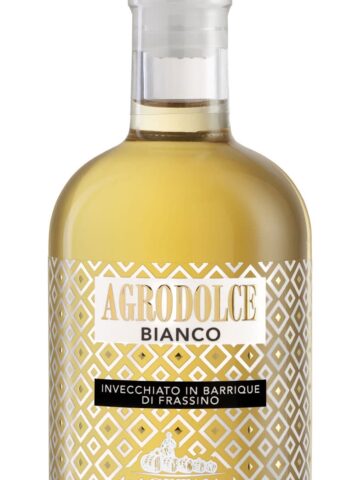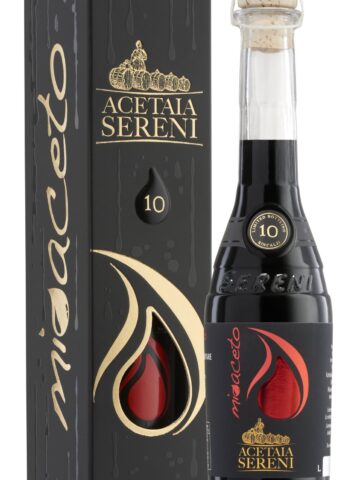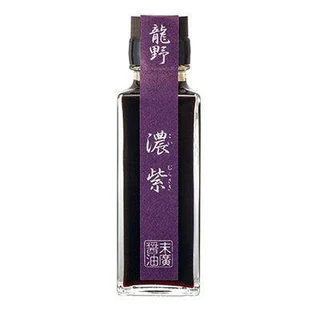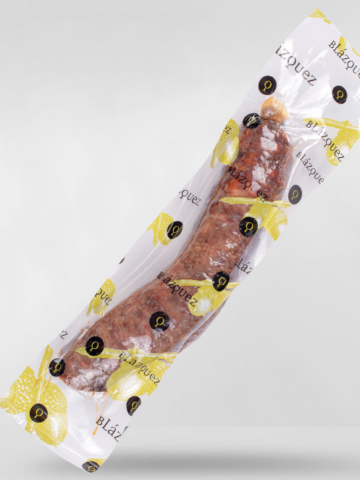O PROIZVODNJI / ABOUT PRODUCTION
Dvije vrste balzamičnog octa
Prvi je balzamični ocat IGP (zaštićena oznaka zemljopisnog podrijetla), a drugi je tradicionalni balzamični ocat DOP (zaštićena oznaka izvornosti).
Oba ova proizvoda mogu se proizvoditi samo u regiji Modena kako bi im Consorzio dodijelio svoje oznake. Acetaia Sereni koristi samo grožđe Trebbiano i Lambrusco, koje se sakuplja jednom godišnje diljem Vendemmije.
Klimatski uvjeti Modene i njezine pokrajine igraju ključnu ulogu u životu i razvoju balzamičnog octa. Acetaia nikada nije termički regulirana: tavani na kojima se skladište bačve ljeti dostižu visoke temperature, a zimi niske temperature. Sa stalnim svježim zrakom koji dopire iz rijeke Panaro, ovi uvjeti omogućuju savršenu atmosferu u kojoj sazrijeva ocat.
Balzamični ocat IGP napravljen je od vinskog octa i kuhanog soka od grožđa i odležava u jednoj velikoj bačvi minimalno 60 dana. Okus mu je kiseo i voćni, a konzistencija mu je tekućinija od tradicionalnog balzamičnog octa. Francesco objašnjava da je IGP balsamic uobičajen za svakodnevnu upotrebu.
Tradicionalni balzamični ocat DOP napravljen je od mosto cotta , kuhanog mošta od grožđa Trebbiano, i zakiseljen/fermentiran je u tavanima. Tijekom vremena ocat se pretače iz bačve u bačvu najmanje 12 godina, a najviše 25. Sve ove vrijedne bačve izrađene su od različitog drva, uključujući hrast, kesten, smreku, bagrem, jasen, dud i trešnja. Kao rezultat toga, konzistencija octa je daleko gušća, a okus kompleksniji s karakterističnim notama začina. Trošak nabave je puno veći od IGP varijante.
Tradicionalni balzamični ocat iz Modene mora se puniti u Giugaro bocu od 100 ml u obliku lukovice, nazvanu po svom tvorcu, talijanskom dizajneru automobila Giorgetto Giugaro.
Svaka boca zapečaćena voskom prepoznatljiva je po jedinstvenom serijskom broju koji je odobrio Consorzio.
Two types of balsamic vinegar
The first is balsamic vinegar PGI (protected designation of geographical origin), and the second is traditional balsamic vinegar DOP (protected designation of origin).
Both of these products can only be produced in the Modena region in order for the Consorzio to grant them their labels. Acetaia Sereni uses only Trebbiano and Lambrusco grapes, which are harvested once a year throughout Vendemmia.
The climatic conditions of Modena and its province play a key role in the life and development of balsamic vinegar. Acetaia is never thermally regulated: the attics where the barrels are stored reach high temperatures in the summer, and low temperatures in winter. With constant fresh air coming in from the Panaro River, these conditions provide the perfect atmosphere for the vinegar to mature.
IGP balsamic vinegar is made from wine vinegar and boiled grape juice and is aged in one large barrel for a minimum of 60 days. Its taste is sour and fruity, and its consistency is more liquid than traditional balsamic vinegar. Francesco explains that IGP balsamic is common for everyday use.
Traditional DOP balsamic vinegar is made from mosto cotta, a boiled Trebbiano grape must, and is acidified/fermented in attics. Over time, the vinegar is transferred from barrel to barrel for at least 12 years, and a maximum of 25. All these valuable barrels are made from different woods, including oak, chestnut, spruce, acacia, ash, mulberry and cherry. As a result, the consistency of the vinegar is much thicker and the taste more complex with characteristic notes spice. The acquisition cost is much higher than the IGP variant.
Traditional balsamic vinegar from Modena must be bottled in a 100 ml bulb-shaped Giugaro bottle, named after its creator, the Italian car designer Giorgetto Giugaro.
Each wax-sealed bottle is identified by a unique serial number approved by the Consorzio.
